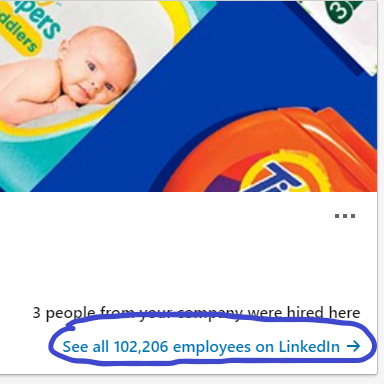Fowler Students Learn How to Jump-Start Their Careers in an Economic Crisis
Jeremy Schifeling, who is also known as one of “The LinkedIn Guys” from Khan Academy, presented to students from the Fowler College of Business at San Diego State University on the topic of “How to Navigate Your Career in the Midst of a Crisis.” The college’s Career Management Center sponsored the presentation.
Schifeling designed the webinar to help students entering the job market “navigate their way when things get complicated” by illustrating not only how companies hire talent, but how they recruit in both thriving and unstable economic environments.
The Labor Market Might be in Crisis, but the Hiring Process is Not
Schifeling started the presentation by discussing “three core principles” to help the audience understand the labor market’s impact on their job search. Those principles are:
- Labor may be a market but hiring is a process: Schifeling pointed out that even though there is chaos in the labor market, the individual hiring process within large organizations is not chaotic, but is a step-by-step process.
- Markets are out of your control, but processes are within your grasp: While you can’t control the labor market, you can control the steps taken to give yourself an advantage in the job market. “Take control of your own destiny with every tool that’s available to you,” Schifeling said.
- To influence a changing process, you need to know what’s changed and what matters now: “If you can keep your eyes on those particular prizes, you’re going to win the game,” said Schifeling.
Exude Confidence and Warmth
Schifeling continued by pointing out that more than 800,000 jobs were posted on LinkedIn last week alone indicating that while the economy is in crisis, there were still many opportunities available. However, the COVID-19 pandemic dictates that companies must hire by conducting online interviews at this time, so he offered some tips on how to achieve a successful online interview:
- Recognize that interviews aren’t rational tests: Interviewers don’t make their decisions on technology. They make their decisions based on two issues. “Sociologists have uncovered through years of research that humans make decisions based on confidence and warmth,” said Schifeling. “At the end of the day, interviewers are humans, like you and me.”
- Demonstrate warmth by realizing you’re now on stage: Instead of a face-to-face interview, online candidates must compete with distractions such as other screens the interviewer may be viewing. “You now must do what actors have always done and project by using extra tone and extra body language to stand out,” said Schifeling.
- Demonstrate competence by realizing you’re now on the clock: Don’t let your mind wander during the interview. Schifeling told the audience to have some talking points and stick to them while adding warmth and passion to their interview responses.
To help the students in the audience better understand how to implement this advice, he demonstrated his techniques with Greg Tanneberger, professional development and external relations specialist from Fowler’s Career Management Center, along with one of the students in the audience. He also shared how LinkedIn offers interview preparation information (go to Jobs>More>Interview Prep) as a no-charge resource for those new to the interview process.
Relationships are the Key First Step
Schifeling shared how the demand for labor is down while the supply of workers is up, making it essential that job seekers stand out in a crowded field to be successful. He also noted that, statistically, while companies get more applications through career sites and job boards than anywhere else (75%), more hires (40%) are made through employee referrals than anywhere else. “That should tell you that job search success is not about volume, it’s about applying smartly and that means leveraging relationships,” he said. “What recruiters care about is people and they care about relationships. Relationships will get you a job better than anything else.”
 To build these relationships, Schifeling demonstrated how to use LinkedIn to find
key people at specific companies. Using Proctor & Gamble as an example, he went to
the company’s LinkedIn page by clicking the “see all employees” function. Doing that
allowed him to see all the company’s current and former employees. Job seekers can
first click the connections button at the top of the page to see if there are people
they already know working in the organization. This makes it easier to reach out to
those who might give job seekers background surrounding the position or company culture
and a possible referral to the recruiter.
To build these relationships, Schifeling demonstrated how to use LinkedIn to find
key people at specific companies. Using Proctor & Gamble as an example, he went to
the company’s LinkedIn page by clicking the “see all employees” function. Doing that
allowed him to see all the company’s current and former employees. Job seekers can
first click the connections button at the top of the page to see if there are people
they already know working in the organization. This makes it easier to reach out to
those who might give job seekers background surrounding the position or company culture
and a possible referral to the recruiter.
Go to Where the Jobs Are
Schifeling also advised students to search for jobs in industries such as technology and healthcare, that are trending upward in the number of job postings. However, he pointed out that recruiters in those industries are more interested in job seekers who can effectively do the work more than individuals interested in the industry itself. To find connections in a specific industry or with a certain job title, he advised students to search on SDSU’s LinkedIn Page through the alumni button. This tool will display alumni with matching job titles or industry connections, allowing job seekers an opportunity to connect with them through LinkedIn’s messaging center.
The presentation closed with a review of the points made throughout the event and a Q&A session with the audience. Schifeling’s responses included tips and tricks on how to connect to people via email and through LinkedIn, and how to use another site called SlideShare to investigate slide shows that could shed light on organizations or projects that could offer helpful insight during an interview.
Schifeling concluded by advising students in the audience to start building their networks well before beginning the job search process so they are prepared to ask for referrals when the time is right.

